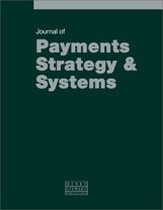What benefits have been delivered in practice by remote deposit and how do you maximise them?
Abstract
Remote deposit (also known as remote capture) is a key recent product innovation in treasury management. Remote deposit allows businesses and government entities to replace their physical bank deposit with an electronic transmission of cheque images and data. Using a desktop cheque scanner and a PC, organisations can scan cheques, optionally capture additional payment-related data, balance deposits and submit them for processing with a simple computer instruction. This paper explores the key benefits of remote deposit. It examines how well these benefits apply to various organisations and how they have been delivered upon thus far in the industry. It also provides best-practice guidance on applying and quantifying remote deposit benefits. Readers who are considering a remote deposit programme will be able to anticipate business process impacts, understand the rules and law surrounding the process and identify the key elements for a remote deposit deployment plan.
The full article is available to subscribers to the journal.
Author's Biography
Kristine Oberg is Vice-President, Strategic Market Development at Nova Information Systems. Until recently, she managed new product development for treasury management at U.S. Bank. She was a leader in U.S. Bank’s payments, cheque conversion, image clearing and receivables initiatives. A frequent speaker about treasury management innovations, Kristine is also an active participant in various industry groups, including NACHA (the National Automated Clearinghouse Association). An alumna of the MS in the Management of Technology programme at the University of Minnesota, Kristine also holds Certified Treasury Professional (CTP) and Accredited ACH Professional (AAP) certifications.
